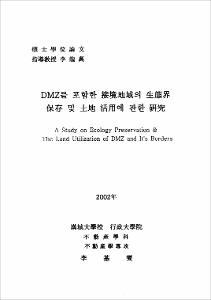DMZ를 포함한 接境地域의 生態界 保存 및 土地 活用에 관한 硏究
= (A) study on ecology preservation & the land utilization of DMZ and it's borders
- Files in This Item:
-
-
Download
 000000066109.pdf
기타 데이터 / 1.88 MB / Adobe PDF
000000066109.pdf
기타 데이터 / 1.88 MB / Adobe PDF
-
Items in Repository are protected by copyright, with all rights reserved, unless otherwise indicated.